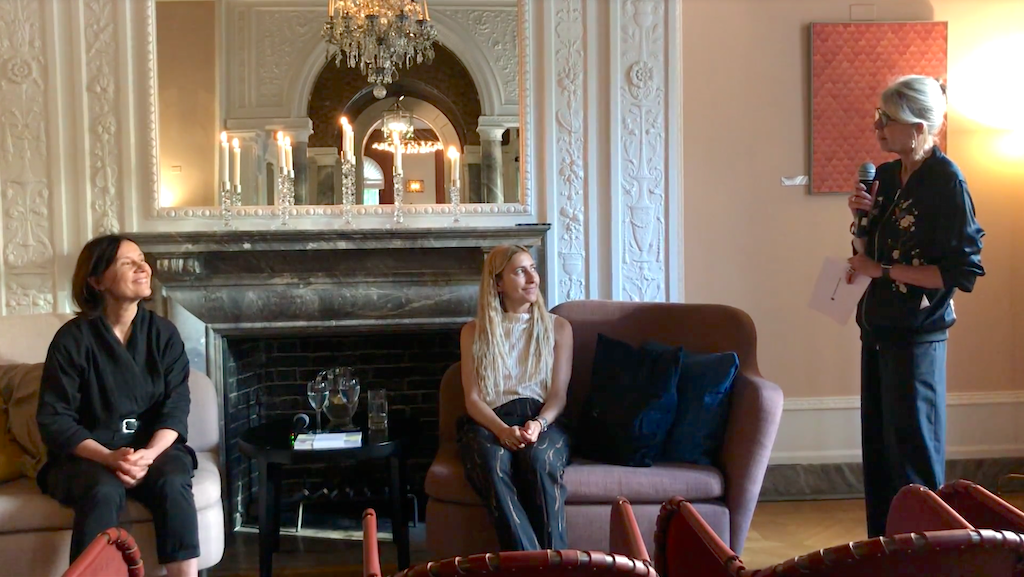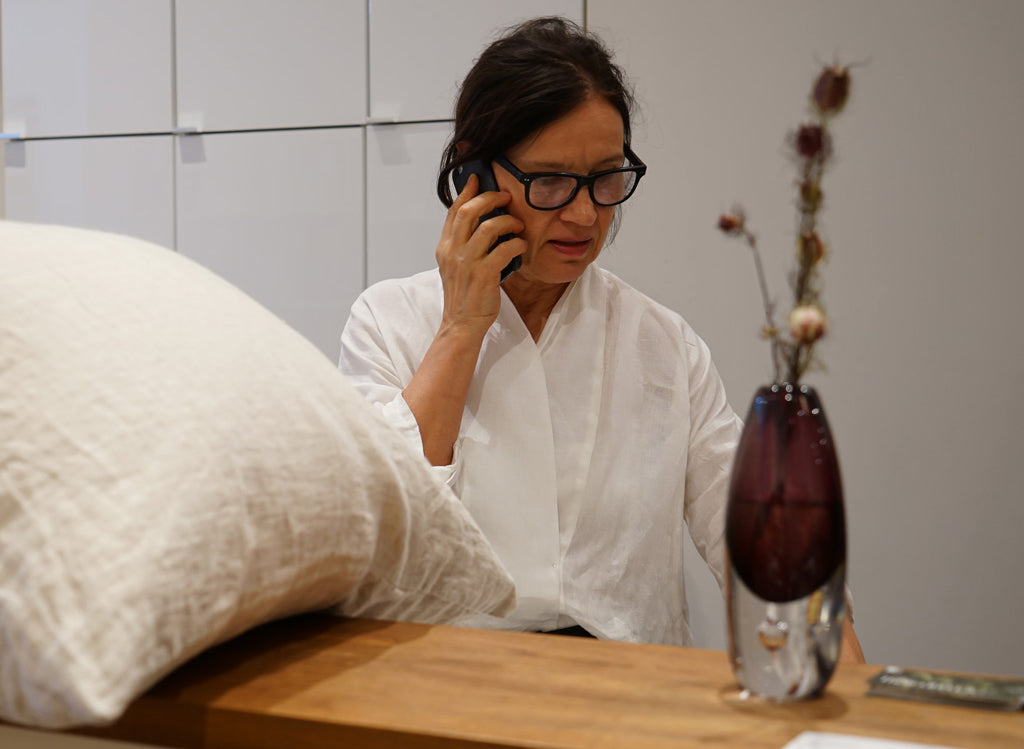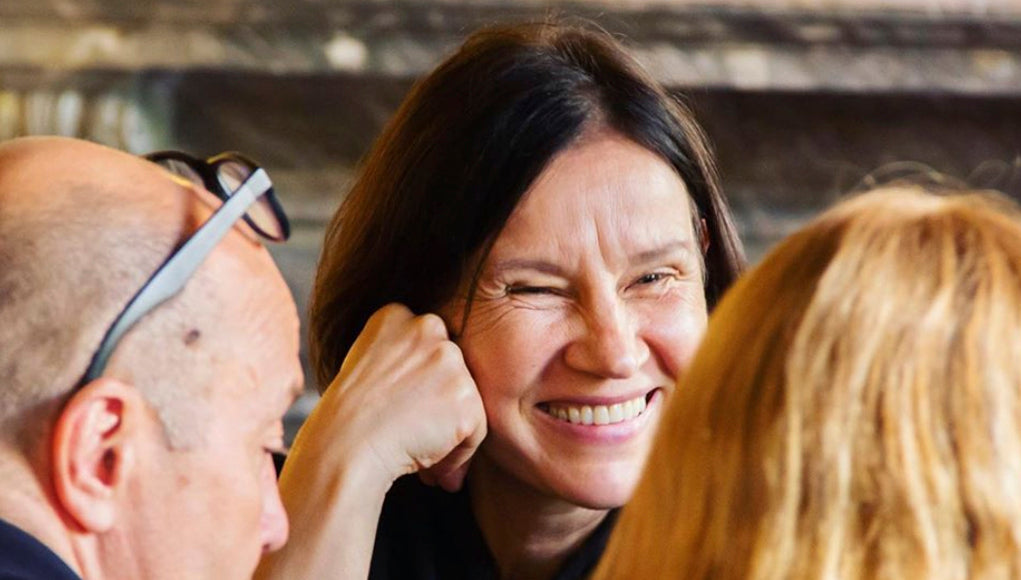Recently, in an event conceived by The Finnish Cultural Institute in New York & hosted by Consulate General of Sweden in New York, Anki spoke on design alongside Shanan Campanaro of Eskayel.
We've put together a few of her answers and asked her to go into more detail on some of them.
WHAT MAKES YOUR WORK SWEDISH?
I don’t think my work is all about being Swedish, but I wouldn’t do what I do without it. It comes out not only in the work I do but in the way I do it and how I deal with people. When I encounter other people, staff or customers, in work situations, going to a factory, for example. I can tell that my approach is Swedish, and it has a lot to do with that.
In aesthetics also probably my strongest influence is Swedish design being very practically oriented, and useful, not frivolous. First and foremost a design has to do what it's supposed to do, and then if it does that it’s automatically beautiful. I'm a little bit more laid back and restrained, but I think I have that in me.
WHAT DOES BEING SWEDISH MEAN TO YOU?
Demeanor, frankness, although sometimes that can be awkward in terms of being too direct. I don't brag, don't inflate my own importance. I think about meetings as relationships, not just business. I'm always looking for ways to improve and be thrifty. Interestingly, Swedes are known for their diplomatic skills, and I think that stems from the ability to see more than one side. In business meetings, I don't have an attitude or sit on my high horse.
WHEN DID YOU KNOW YOU WANTED TO BE IN YOUR CURRENT CAREER?
I didn’t know when I was a kid at all. I thought maybe I’d be a gymnastics teacher or a hairdresser. In school, I thought the best job must be the teachers'. Finishing high school, my best grades were in English and Art and then it started to open up, but until then I hadn’t considered it.
HOW DO YOU LIKE TO WORK?
I prefer to work alone, but I very much like to ask other people what they think. Not so much because I want to follow what they say, I just like to hear and know I made the right decision. Even if they don’t agree with me, it's helpful.
WHICH BOOK SHOULD EVERY DESIGNER READ?
The Courage to Create, but it's a bit cultish, or should I say was. I did read it back in the day, it's a more philosophical take on creativity and brings some weight to the conversation. That's as opposed to a coffee table book with pictures.
Also, maybe something on Bauhaus, something historical. About Josef Frank or William Morris, anything in our field. The "anything Bauhaus" answer is a bit predictable, but it's so important to design today. It has a philosophy that is very cool and that I mostly agree with. It's majorly built on democratic ideas and the belief that design and architecture can change people's lives and make a positive impact. Now, it was very male-dominated, but I can't do much about that.
WHAT DO YOU SEE AS A GAP IN DESIGN EDUCATION?
It might have changed already, but when I went to design school I felt it was all very abstract and there wasn't enough reality ingrained in the education at all. The ones, including myself, that were successful in getting careers out of this field that we were educated for all had jobs during school time. We were able to learn those really important things outside of school. I think there were always some teachers who, like myself, had a real job, but they never really talked about how it really worked. I thought that was missed.
DO YOU THINK ABOUT HOW PEOPLE USE YOUR DESIGNS?
I have no interest in meddling in the second life of my items. It’s just nice to know that people are using them and that they're in as many situations as possible.
WHAT CONSTITUTES A PERFECT OBJECT?
For example, if it’s a chair, it has to be comfortable. If it set out to say that it has to do something, it has to do that really well. If it’s beautiful on top of that, well that's more subjective.
I'd like to say "things that are well designed almost always please the eye as well" but I'm not sure that's true. Sometimes an aesthetic idea can be prioritized, but it's always borderline.
Do you have any more questions for Anki? Email us at hello@areahome.com if you do!





